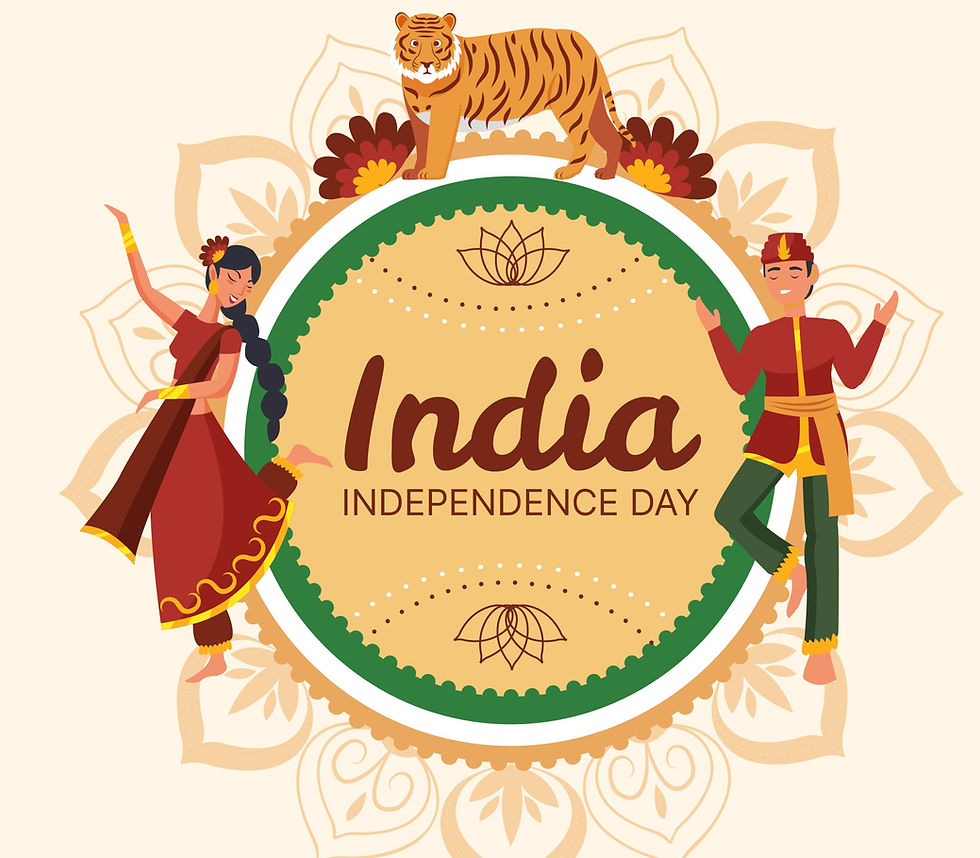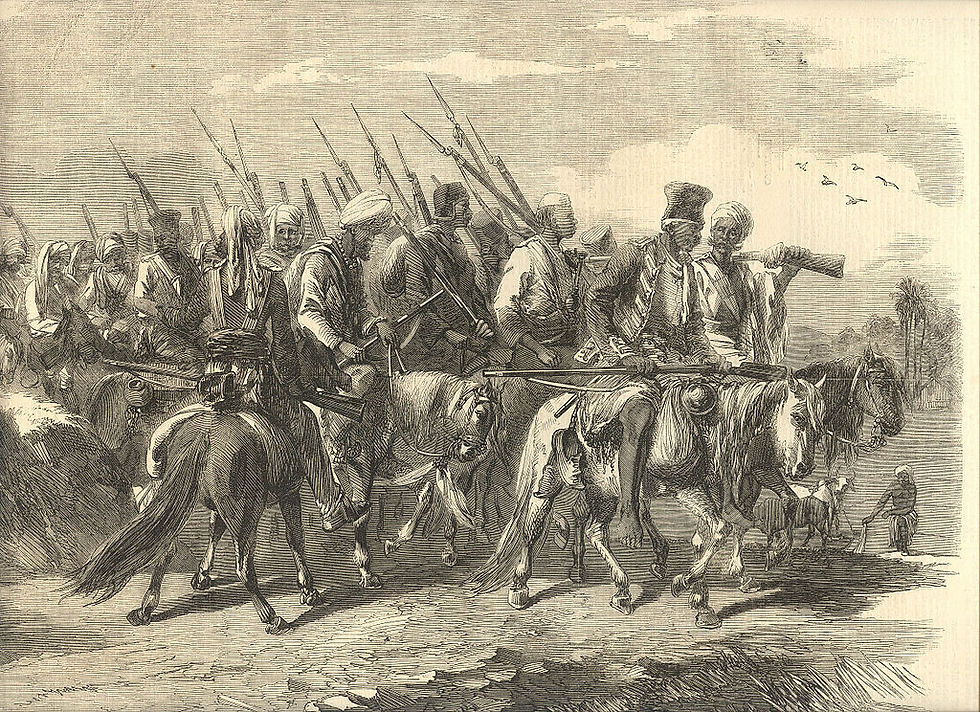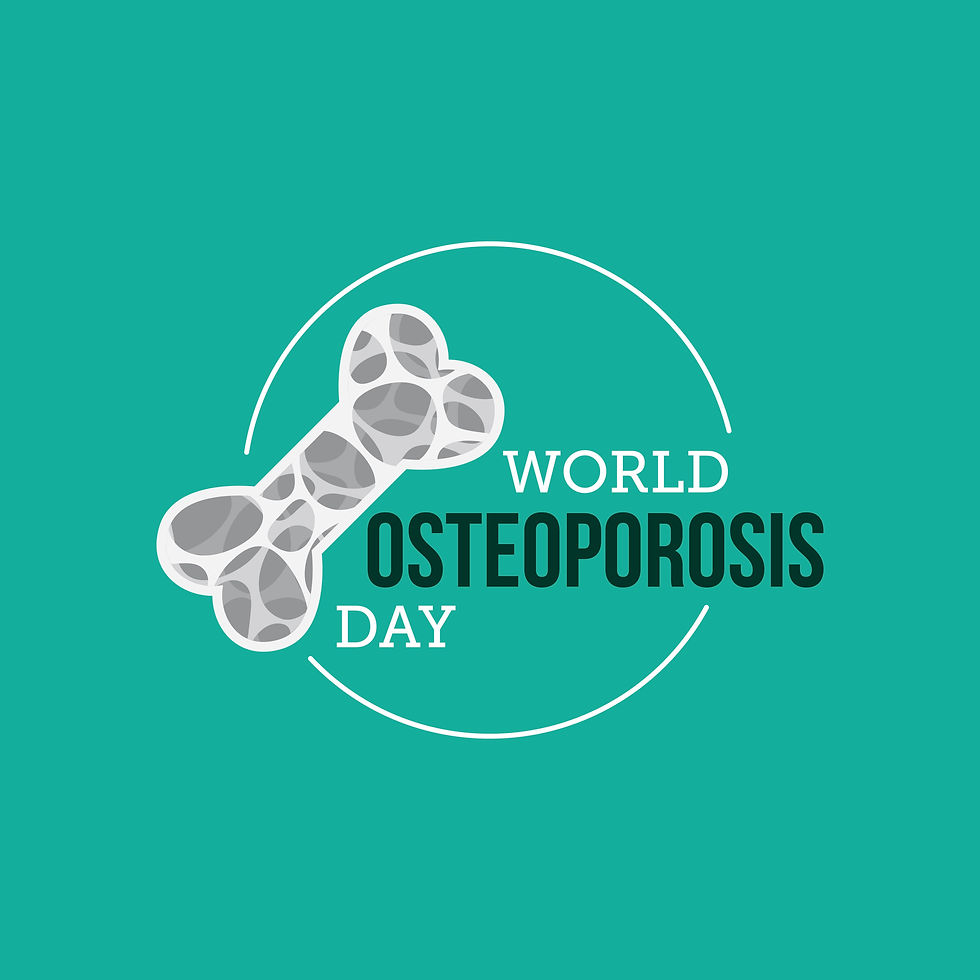Independence Day of India
- Team Himalayan Journal

- Aug 15, 2020
- 5 min read

In memory of this great day, the Prime Minister of India addresses the nation by hoisting the national flag tricolor on the ramparts of the Red Fort every year.
Objective: It is a day when we pay our respects to our great national leaders and freedom fighters who sacrificed their lives and sacrificed their lives to liberate India from foreign control.
First Time: The first Prime Minister of India, Pandit Jawaharlal Nehru, hoisted the tricolour flag on the Red Fort on 15 August 1947 for the first time. Independence Day is celebrated on 15 August every year from the same day.
Special Event: Special Independence Day programs are organized at the state level, including flag hoisting events, march pasts, and cultural events. These events are held in state capitals, and the Chief Minister presides over these programs. Programs are organized by educational institutions, housing associations, cultural centers, and political organizations on small scales.
Other information: The President broadcasts messages to the nation on the eve of Independence Day. After this, the next day, the Prime Minister waving the flag on the Red Fort at 7 am and gives a speech on the policy of his country to his countrymen.
Introduction

Independence Day of India is a day when Indians pay tribute to our great national leaders and freedom fighters who sacrificed their lives and sacrificed their lives to liberate India from British rule. On 15 August 1947, the people of India got Independence from British rule by giving millions of sacrifices. This national festival is a symbol of India's pride.
The tricolour flag is hoisted on 15 August every year on government buildings. Prime Minister wave the flag and give a speech on the policy of their country to their countrymen from Red Fort. Thousands of people go to the Red Fort to hear his speech.
Independence Day is also celebrated in schools, and sweets are distributed among the children. On 14 August, at 8 pm, the President gives a message to his countrymen, which is broadcast on radio and television.
History of Independence Day of India

In May 1857, it appeared in some newspapers in Delhi that after the Battle of Plassey, the English state which had been established in India on 23 June 1757 AD would end by 23 June 1857 AD.
This prophecy spread all over the country, and a wave of enthusiasm flowed for the people to achieve freedom. Also, in 1856, Lord Canning passed the general recruitment law.
According to which the Indian soldiers had to give in writing that wherever the government sends them to go to war, they will go there. This led to high anger among Indian soldiers. At that time, there were three lakh soldiers in the company's army, of which only five thousand were Europeans.
Soldier revolution (Sepoy Revolution 1857)

When there was an atmosphere of dissatisfaction around the country, the British government decided to give the soldiers new rifles in place of the old guns. The pig and cow fat was used in the cartridges of these rifles, and the soldiers had to cut the heads of these cartridges with their teeth to fill the rifles. This provoked Hindu and Muslim soldiers.
They felt that the British government wanted to destroy their religion. So, when these cartridges were distributed among the soldiers of Meerut, 85 soldiers refused to use them. On this, they were punished and put in prison. On this behavior of the government, Indian soldiers revolted on the day of 10 May, 1857, chanting "Har-Har Mahadev, Maro Firangi Ko."
Lord Ripon

Lord Ripon made the rule to conduct a census in India every ten years, and for the first time in 1881, it is done every ten years till now. In 1882, Lord Ripon made many reforms. He reformed the Municipal Board, education, and decentralized financial powers.
In the central list, opium, rail, post office, salt textile, etc. were kept. Education, police, jails, press, and public works were placed on the provincial list. In the third list, landlords, forest stamps, etc. were kept, the income received by these issues was divided between the central government and the provincial governments. Lord Ripon spread the net of local boards all over the country and increased the number of non-government members.
Lord Curzon

Between 1905 and 1919, the national movement was in the hands of the militants. The main leaders of the militants were Bal, Lal, Pal (Bal Gangadhar Tilak, Lala Lajpat Rai, and Vipin Chandra Pal ). Lala Lajpat Rai, disgruntled at the policy of liberals, said that even after twenty continuous agitations, we got stones instead of bread. We will not beg for any more time before the British, nor will we beg for them.
In South Africa, the condition of Indians was very lamentable. They were viewed with hatred because of the vision of apartheid. They were not allowed to enter hospitals and hotels. Children could not get an education in higher institutions.
Under the Registration Act (1907), Indians had to get their names written in the offices like criminals and had to print their fingers. Lord Curzon 's repression policy (1898 to 1905) had led to many atrocities on Indians. He spoke very derogatory words to Indians in his speech, and in the name of efficiency, Calcutta Corporation Official Secret Act, Indian University Act, took many such steps which were aimed at undermining Indian unity and strangling Indian sentiments.
As soon as the announcement of the dissolution of Bengal in 1907 AD, the hot party became active. In December 1907, he tried to throw a bomb on the car of the Governor of Bengal. They then fired on the magistrate of Dhaka. But he escaped. Kennedy and his daughter died after the Muzaffarpur bomb exploded. Similar incidents started in Punjab and Maharashtra as well.
Establishment of Ghadar Party

In 1913, the Indians settled in America founded the Ghadar Party. The prominent leaders of this party were Sohan Singh Bhakna, Lala Hardayal, Baba Basakha Singh, Pt. Kashiram, and Udham Singh. Thousands of Indians of this party came to India from America. He inspired soldiers to revolt in military cantonments like Lahore, Firozpur, Ambala, Meerut, Agra, etc. and observed the day of Gadar on 25 February 1915.
But Kupal Singh's betrayal foiled this plan. Like the Ghadar Party, the Indo-German Mission also has Turkey and Kabul. The plan was to liberate India by obtaining the cooperation of the Indian government and established the Provisional Government of India, whose President was King Mahindra Pratap and Prime Minister Barkat Allah. But these patriots could not succeed because the situation was not favorable.
Fortunately, in South Africa, Indians found a leader in the form of Mahatma Gandhi, who united all Indians. He started the Satyagraha movement and stopped the laws imposed on Indians.
Gandhiji's movement

In Bombay province, Jeetendra Nath sacrificed his life after 61 days of hunger strike. Gandhi marched to Dandi to break the salt law. The British arrested Gandhiji when he broke the law. But the movement got louder in the country, so Gandhiji was released. The British called the Round Table Conference in London three times, but Gandhiji returned disappointed every time.
World War II broke out on 3 September 1939. On 8 August 1942, the Congress session was held in Bombay. The " Quit India " resolution passed in that. Pandit Motilal Nehru and Pandit Jawaharlal Nehru also worked a lot for freedom.
The British government resorted to repression policy. Meanwhile, Netaji Subhash Chandra Bose 's Indian tried to free the remaining India out. His idea was to take advantage of the Second World War. He founded the Azad Hind Fauj. And gave the slogan "Delhi Chalo." But Netaji was killed in an accident, so this movement also failed. After that, on 18 February 1946, military revolts arose in Bombay. The soldiers came out of their barracks and attacked the British soldiers and killed the English soldiers for five days. Finally, it became clear to the British that now they cannot keep India as their slave for much longer.
And this is how India got its Independence.





Comments